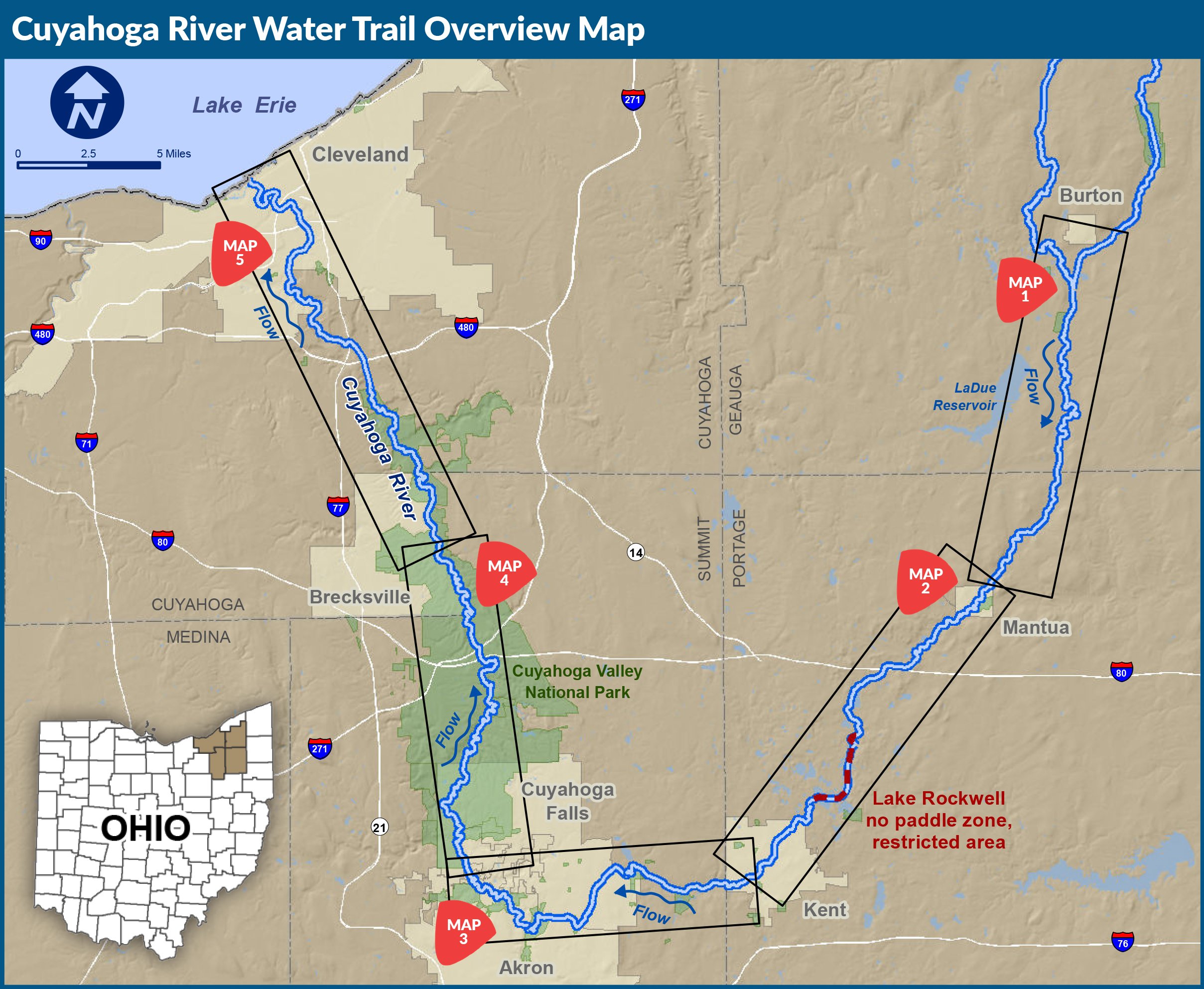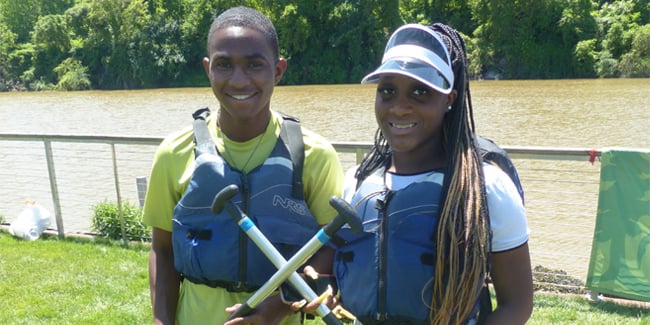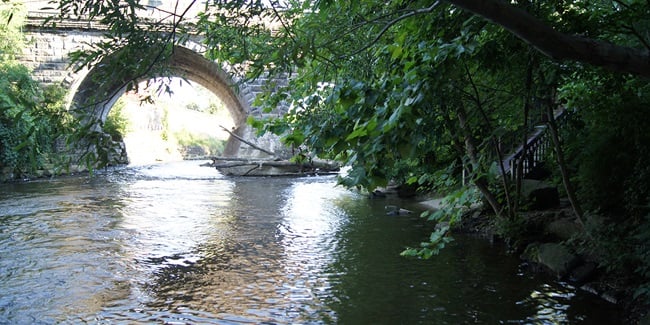The Cuyahoga River Ohio’s 13th Water Trail
The Cuyahoga River is a symbol of efforts to clean up America’s waterways.
Famous for catching fire, the Cuyahoga is now sparking excitement. Wildlife and people are returning. In designating the Cuyahoga River Water Trail, community partners are taking advantage of new opportunities and create a lasting legacy.
Together, we:

- Increase public access to and along the Cuyahoga River for all people.

- Share resources to create better and safer experiences for visitors.

- Enjoy the health and beauty of the Cuyahoga River.

- Boost tourism and economic development in nearby communities.

Ohio’s 13th State Designated Water Trail
Many organizations and agencies have been meeting since February 2011 to develop the Cuyahoga River Water Trail. On October 4, 2019, the Cuyahoga River was officially designated a state of Ohio water trail.
Thanks to this designation, you can enjoy:

- 24 public access points along nearly 90 miles of river.

- A diverse variety of paddling experiences including: calm and scenic waters near Hiram, challenging white water in the gorge of Cuyahoga Falls, naturally remote areas in Summit Metro Parks and Cuyahoga Valley National Park and the industrial shipping channel in Cleveland.

- The lasting legacy project of the rejuvenation of the Cuyahoga River, which in 2019 celebrated 50 years since the infamous 1969 fire.
What is a water trail?
A water trail is a marked route for recreation on navigable waterways such as rivers, lakes, canals, and coastlines.

How can I support the trail?
Paddle the river using public access points and encourage others to do the same.

Where is the trail?
The Cuyahoga River flows in a unique U-shape through four Northeast Ohio counties to Lake Erie in downtown Cleveland. The five water trail segments offer diverse paddling experiences.
Ohio’s diverse system of water trails is statewide and includes the Great Miami, Kokosing, Mahoning, Maumee, Muskingum and Olentangy rivers. Some of the rivers are wild and natural, while others, like the Olentangy, travel through urban areas.

